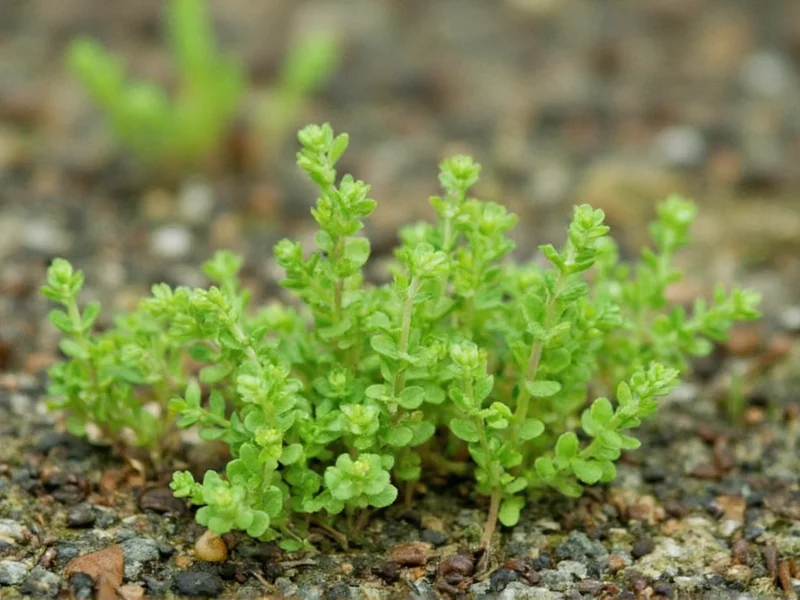As a versatile and resilient ground cover option, creeping thyme offers both practical benefits and aesthetic appeal for gardeners seeking low-maintenance landscaping solutions. This comprehensive guide details everything you need to know about successfully planting and establishing creeping thyme in your garden.
Understanding Creeping Thyme Varieties
Before planting creeping thyme, it's essential to understand the different varieties available. While common creeping thyme (Thymus serpyllum) is the most widely used, several cultivars offer unique characteristics:
| Variety | Height | Flower Color | Special Characteristics |
|---|---|---|---|
| Common Creeping Thyme | 1-3 inches | Pink to purple | Strong fragrance, excellent for between pavers |
| Woolly Thyme | 1-2 inches | Pale pink | Soft, fuzzy leaves, drought-tolerant |
| Lemon Thyme | 2-4 inches | Light pink | Citrus-scented, culinary uses |
| Cinnamon Thyme | 2-3 inches | Reddish-purple | Warm spice aroma, attractive foliage |
Optimal Timing for Planting Creeping Thyme
The best time to plant creeping thyme depends on your climate zone. In most regions, spring planting after the last frost date allows plants to establish before summer heat. Early fall planting (6-8 weeks before first frost) also works well in warmer climates, giving roots time to develop before winter.
For gardeners in USDA zones 4-9, aim to plant creeping thyme when soil temperatures consistently reach 60°F (15°C). This perennial herb is hardy to zone 4, but young plants benefit from being established during milder seasons. Avoid planting during extreme heat waves or when heavy frost is expected within two weeks.
Soil Preparation Essentials
Proper soil preparation significantly impacts how well creeping thyme establishes. Unlike many plants, creeping thyme actually prefers lean, well-draining soil rather than rich, fertile conditions. Here's how to prepare your planting area:
- Clear the area of weeds and debris
- Loosen soil to a depth of 6-8 inches
- Add sand or gravel (up to 30%) to improve drainage if needed
- Avoid adding rich compost or fertilizer which can promote excessive leaf growth at the expense of flowering
- Test soil pH - creeping thyme prefers slightly alkaline to neutral conditions (pH 6.5-8.0)
For planting between pavers or stepping stones, fill the gaps with a 50/50 mix of sand and soil before inserting plants. This creates the perfect drainage conditions creeping thyme requires.
Planting Techniques for Maximum Success
Whether you're planting creeping thyme as ground cover, between stepping stones, or in containers, proper technique ensures healthy establishment. Follow these steps for best results when you plant creeping thyme:
- Dig holes slightly larger than the root ball of your plants
- Space plants 6-12 inches apart depending on how quickly you want coverage (closer spacing fills in faster)
- Set plants at the same soil depth they were growing in their containers
- Gently firm soil around roots without compacting
- Water thoroughly after planting
- Apply a light layer of gravel mulch (avoid organic mulches which retain too much moisture)
For planting between pavers, use a trowel to create small pockets of soil in the joints, then insert small plants or cuttings. Water gently to settle the soil without washing it away.
Watering Requirements After Planting
While established creeping thyme is remarkably drought-tolerant, proper watering during the first growing season is crucial. During the initial 4-6 weeks after planting creeping thyme, follow this watering schedule:
- First 2 weeks: Water every 2-3 days to keep soil slightly moist (not soggy)
- Weeks 3-4: Water once weekly unless receiving regular rainfall
- After 6 weeks: Reduce to watering only during extended dry periods
Overwatering is the most common mistake when establishing creeping thyme. These plants prefer to dry out between waterings. Check soil moisture by inserting your finger 1-2 inches into the soil - water only when dry at that depth.
Troubleshooting Common Planting Issues
Even with proper planting techniques, gardeners sometimes encounter challenges with creeping thyme. Here are solutions to common problems:
- Yellowing leaves: Usually indicates overwatering or poor drainage. Reduce watering frequency and improve soil drainage.
- Slow establishment: Creeping thyme grows slowly at first. Be patient - most varieties take 1-2 growing seasons to fully establish.
- Fungal issues: In humid climates, powdery mildew can occur. Improve air circulation and avoid overhead watering.
- Poor flowering: Too much shade or overly rich soil can reduce flowering. Move to sunnier location or reduce soil fertility.
- Winter dieback: In colder zones, some varieties may experience winter dieback. Trim dead growth in spring and the plants will regenerate.
Seasonal Care for Newly Planted Creeping Thyme
Proper seasonal care ensures your newly planted creeping thyme thrives. In spring, apply a light application of balanced fertilizer (5-10-5) as new growth appears. Avoid high-nitrogen fertilizers which promote leafy growth at the expense of flowering.
During summer, monitor for excessive heat stress. While established plants tolerate heat well, newly planted thyme may benefit from light afternoon shade in extremely hot climates. Water only during prolonged dry spells.
In fall, avoid heavy pruning as winter approaches. Instead, trim back any leggy growth after flowering concludes. In colder zones (4-6), apply a light layer of straw mulch after the ground freezes to protect roots from temperature fluctuations.
Benefits of Creeping Thyme as Ground Cover
When considering ground cover options, creeping thyme offers numerous advantages over traditional choices. This low-growing perennial provides excellent erosion control on slopes while requiring minimal maintenance once established. Its dense growth habit naturally suppresses weeds, reducing the need for chemical herbicides or frequent weeding.
One of the most appealing features of planting creeping thyme between pavers is its ability to withstand light foot traffic while releasing a pleasant herbal fragrance when stepped on. The plant's small flowers attract beneficial pollinators like bees and butterflies, enhancing your garden's ecosystem. Unlike turf grass, creeping thyme requires no mowing and minimal watering, making it an excellent choice for water-conscious landscaping.











 浙公网安备
33010002000092号
浙公网安备
33010002000092号 浙B2-20120091-4
浙B2-20120091-4